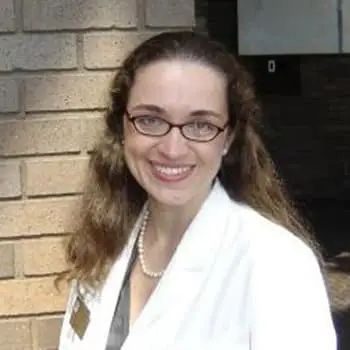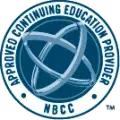Adderall is a prescription medication prescribed to treat attention-deficit/hyperactivity disorder (ADHD). As a Schedule II controlled substance, Adderall carries a risk of abuse, addiction and physical dependence. Physical dependence means that your body has gotten used to Adderall and needs it to maintain normalcy. If you suddenly stop taking Adderall when dependent on it, you may experience withdrawal symptoms.
The following overview highlights Adderall withdrawal symptoms, a typical Adderall withdrawal timeline and how to safely detox from Adderall.
Key Takeaways
- Adderall withdrawal symptoms can range from fatigue to psychosis.
- The higher the dose of Adderall you take, the more at risk you are for withdrawal symptoms.
- An Adderall detox facility can wean you off Adderall in the safest and most comfortable way possible.
Adderall Withdrawal Symptoms
When someone goes through Adderall withdrawal, symptoms can be mental and physical. Some of the common Adderall withdrawal symptoms are:
- Depression
- Agitation
- Fatigue
- Vivid, unpleasant dreams
- Sleep changes
- Increased appetite
- Cognitive slowing
- Physical difficulties
If you take high doses of Adderall, you may be at risk of more dangerous withdrawal symptoms like:
This Season, Give Yourself the Gift of a Fresh Start.
Whether you are struggling with addiction, mental health or both, our expert team is here to guide you every step of the way. Don’t wait— reach out today to take the first step toward taking control of your life.
- Psychosis
- Paranoia
- Disordered thoughts
- Hallucinations
Managing Withdrawal Symptoms
It can be hard to manage stimulant withdrawal symptoms on your own. This is especially true if you take high Adderall doses, as this can put you at risk for more dangerous side effects like psychosis. For this reason, it is crucial to seek medical support before quitting Adderall.
However, there are a couple of things you can do at home to ease your Adderall withdrawal. These include:
- Drinking at least 2 to 3 liters of water per day (roughly ½ to ¾ of a gallon)
- Taking a multivitamin, including B vitamins and Vitamin C
Preventing Adderall Withdrawal
The best way to prevent Adderall withdrawal is to avoid stopping the medication abruptly, especially if you take a high dose. If you are taking Adderall and want to stop, it is best to discuss quitting with your doctor before quitting the medication cold turkey.
Your doctor may suggest strategies, including slowly tapering your Adderall dose, meaning the dose is slowly decreased over time until you are off the drug. This can help prevent withdrawal symptoms as your body can gradually adjust to functioning without Adderall. However, if you are psychologically addicted to Adderall, tapering can be difficult and you may need to undergo a medical detox.
Factors that Influence the Adderall Withdrawal Experience
Certain factors can influence the length of time you experience Adderall withdrawal side effects and how severe they are. These include:
- The dose of Adderall you took, with high doses putting you more at risk of withdrawal
- If you stopped cold-turkey or slowly tapered the dose, as tapering can lessen or prevent withdrawal symptoms
- How long you took Adderall, as long-term use may lead to harsher withdrawal effects than short-term use
- Whether you also abused other substances, such as alcohol, benzos or opioids, as it can be hard to come off multiple substances
- Whether you have co-occurring mental health disorders, which can complicate your recovery if you don’t get treatment
Adderall Withdrawal & Detox Timeline
While the length of time varies among individuals, the general Adderall detox timeline can look like this:
- Within 24 hours of the last dose, withdrawal symptoms begin.
- Within one to three days of the last dose, withdrawal symptoms continue.
- Within three to five days of the last dose, withdrawal symptoms begin to wane.
A potential for post-acute, prolonged withdrawal symptoms exists after you stop stimulants like Adderall. This means that you may have withdrawal symptoms that last for several weeks or months. Protracted withdrawal symptoms are primarily psychological, and unfortunately, little data exists about protracted withdrawal from Adderall specifically.
The Adderall Detox Process
During Adderall detox, you are admitted to a detox facility. There, you can get around-the-clock medical care to manage any withdrawal symptoms that occur. The detox process helps your body slowly remove Adderall from your system in the most comfortable way possible.
When you are admitted to Adderall detox, you will get a customized treatment plan based on your needs. Detox treatment consists of several stages, including evaluation, stabilization and transition to further treatment.
Evaluation
During evaluation, the medical team conducts a full assessment of your medical needs. They will develop a treatment plan after determining your overall health and the extent of your Adderall use.
Stabilization
Immediately following evaluation, the healthcare team will work to medically stabilize you. This includes treating and preventing withdrawal symptoms. Doctors may prescribe medications during Adderall detox to ease your withdrawal symptoms. For example, an antipsychotic may be prescribed if you have severe paranoia or psychosis.
Transition to Further Treatment
Detox is only the first step in Adderall recovery. To remain off Adderall long-term, experts recommend at least 90 days of rehab treatment. During rehab, you can undergo effective treatments for stimulant use disorder, including inpatient and outpatient care. In these programs, you learn coping skills for living and maintaining an Adderall-free life in individual and group therapy and attend regular appointments with your medical team.
Can You Detox from Adderall at Home?
Although it may be tempting to detox from stimulants like Adderall on your own, this is not recommended. The biggest reason for this is the risk of psychotic episodes during withdrawal, which can make you a danger to yourself and others. For this reason, medical supervision during Adderall detox is very important.
For some people, detoxing from Adderall may be possible if their doctor is able to oversee an Adderall taper, which slowly lowers the drug dose to avoid withdrawal. However, if a doctor is not able to provide an Adderall taper, a person should not try Adderall detox on their own.
Help for Adderall withdrawal is available, such as at a medically supervised Adderall detox program at The Recovery Village at Palmer Lake in Colorado. A team of doctors and nurses is available around the clock to help treat withdrawal symptoms as they occur, giving you a safer withdrawal experience.
Adderall Detox in Colorado
If you’re struggling with Adderall in Colorado — including Colorado Springs, Boulder or Denver there are in-state resources available to you. Further, The Recovery Village also has out-of-state programs for Adderall abuse.
The first step towards Adderall recovery is seeking help to get off the drug. Don’t wait: call our intake experts today.









